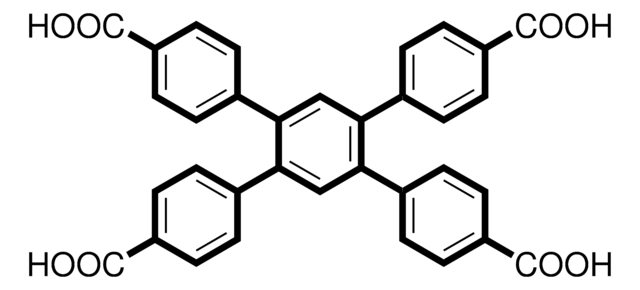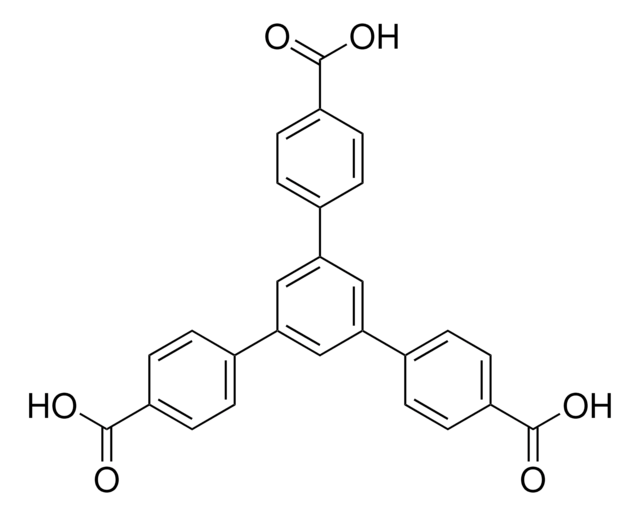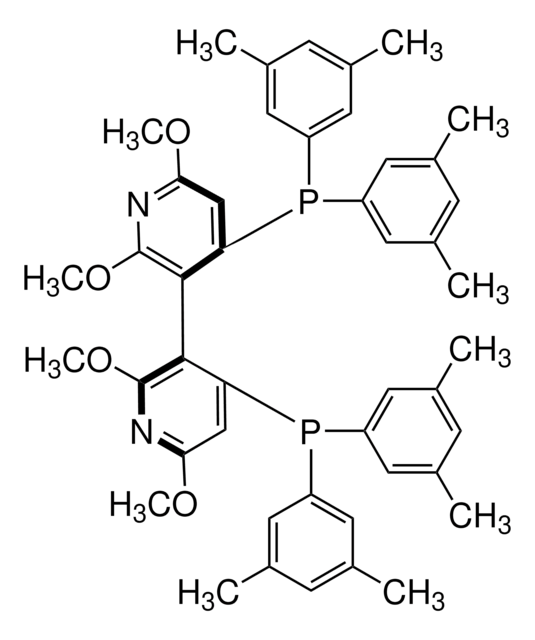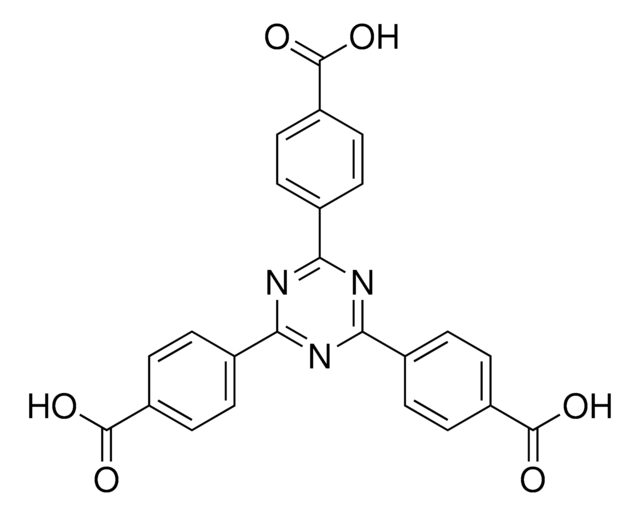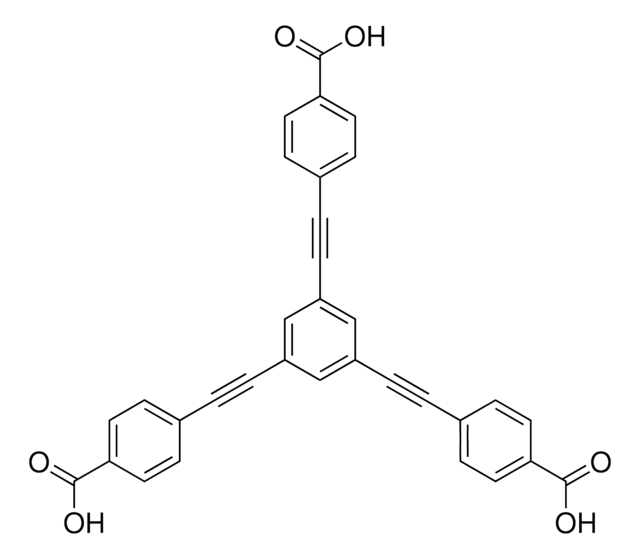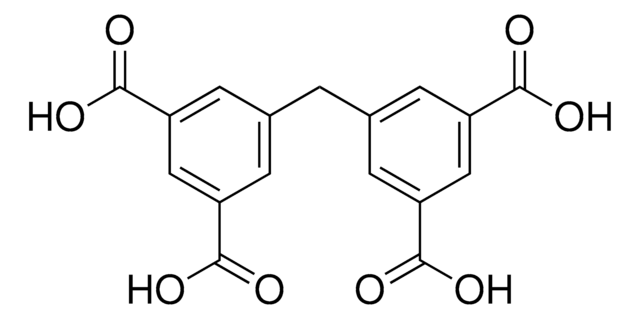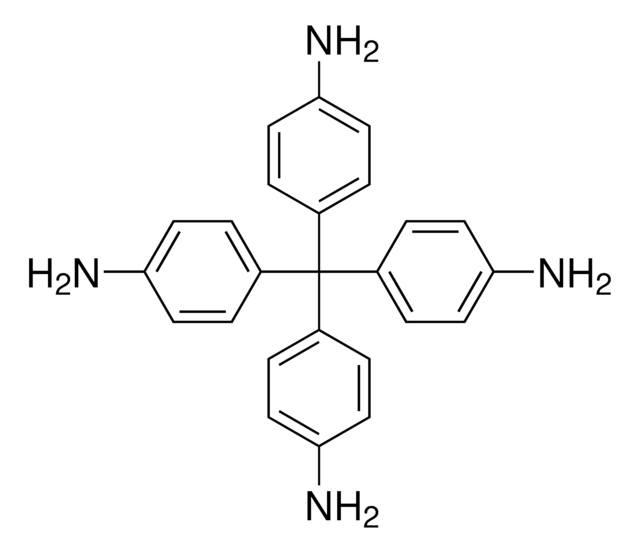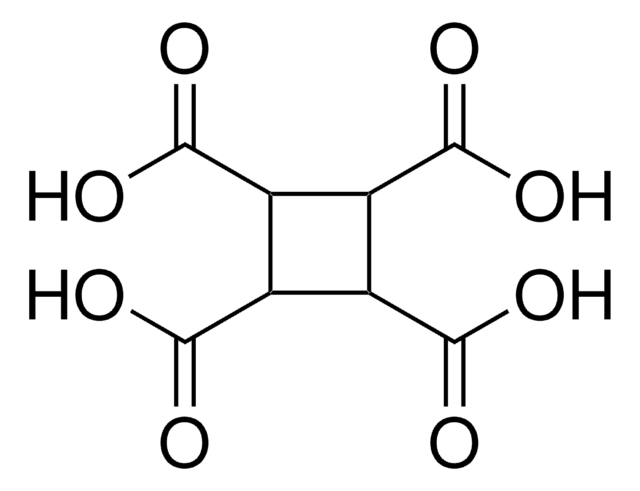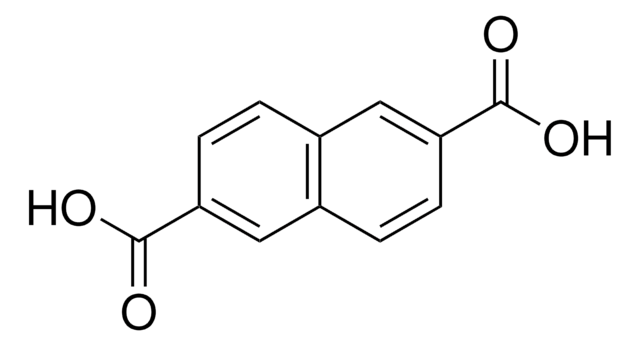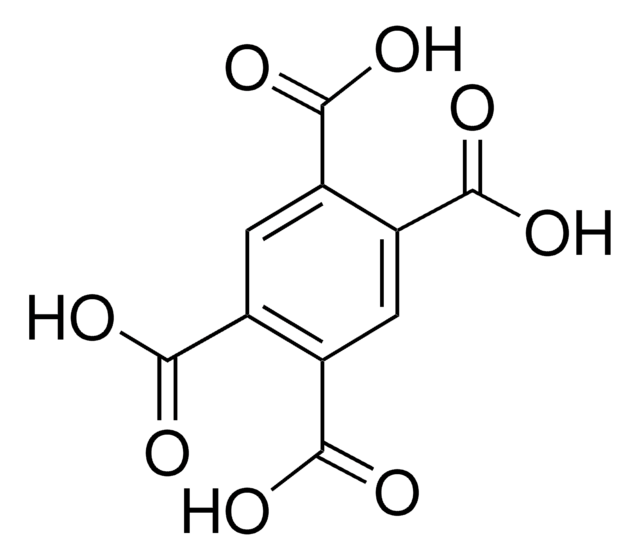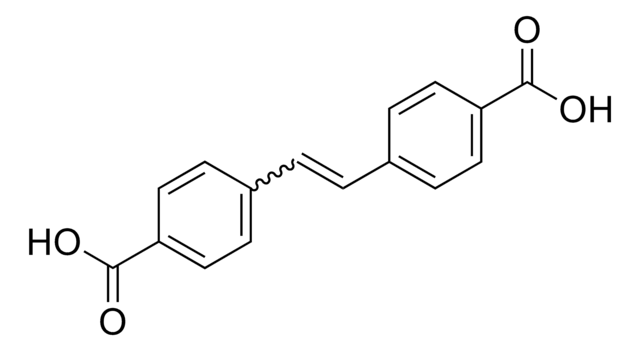715298
1,2,4,5-Tetrakis(4-carboxyphenyl)benzene
contains up to 6 wt. % water, ≥98%
Sinónimos:
4,4′,4′′,4′′′-benzene-1,2,4,5-tetrayltetrabenzoic acid, H4TCPB
About This Item
Productos recomendados
Quality Level
assay
≥98%
form
powder
greener alternative product characteristics
Design for Energy Efficiency
Learn more about the Principles of Green Chemistry.
sustainability
Greener Alternative Product
greener alternative category
SMILES string
OC(=O)c1ccc(cc1)-c2cc(-c3ccc(cc3)C(O)=O)c(cc2-c4ccc(cc4)C(O)=O)-c5ccc(cc5)C(O)=O
InChI
1S/C34H22O8/c35-31(36)23-9-1-19(2-10-23)27-17-29(21-5-13-25(14-6-21)33(39)40)30(22-7-15-26(16-8-22)34(41)42)18-28(27)20-3-11-24(12-4-20)32(37)38/h1-18H,(H,35,36)(H,37,38)(H,39,40)(H,41,42)
InChI key
SRTQKANXPMBQCX-UHFFFAOYSA-N
General description
Application
- the formation of supramolecular heterostructures to functionalize black phosphorus
- synthesis of microporous metal-organic frameworks (MOFs) for potential usage in hydrogen storage, gas separation, and catalysis.
Storage Class
10 - Combustible liquids
wgk_germany
WGK 3
flash_point_f
185.0 °F - closed cup
flash_point_c
85 °C - closed cup
Elija entre una de las versiones más recientes:
¿Ya tiene este producto?
Encuentre la documentación para los productos que ha comprado recientemente en la Biblioteca de documentos.
Los clientes también vieron
Artículos
Metal-organic frameworks, a subset of coordination polymers, represent a powerful new tool for a plethora of alternative energy applications. MOFs are readily available using simple synthetic strategies that supply tailored, high surface area materials.
Nuestro equipo de científicos tiene experiencia en todas las áreas de investigación: Ciencias de la vida, Ciencia de los materiales, Síntesis química, Cromatografía, Analítica y muchas otras.
Póngase en contacto con el Servicio técnico